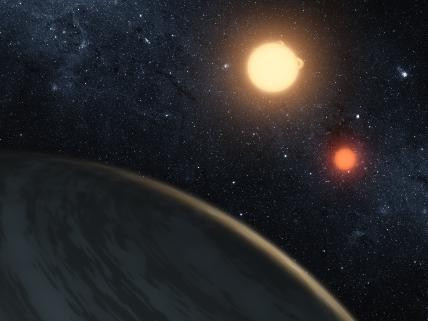NASA Finds Two New Planets Where Life Could Exist

NASA has released a list of recently discovered planets and moons that could possible support life, with two of them meeting its exact criteria for habitability.
Over the past year, the space agency's Kepler mission has discovered around 700 exoplanets at an incredible rate, which it has now categorised into a comprehensive list, 47 of which might be habitable.
Out of these potential habitats, the Habitable Exoplanets Catalogue lists more than 15 planets, with the other 30 being "exomoons."
The two which are most like Earth are called Gliese 581d and HD 85512b.
Gliese 581d is six times the mass of Earth and has a surface temperature of -50 degrees C. It orbits a star around 20 light years away in the constellation Libra. The HD 85512b is four times the mass of our planet and has a surface temperature of 65 degrees C and exists 20 light years away in the constellation Vela.
Most of the other planets discovered by the scientists were gas giants like Jupiter that are in close orbits around their stars.
Kepler 22-b 'Most Earth-Like' Planet: 10 More Potentially Habitable Planets
Previous research has hinted at the idea that there may be other planets similar to Earth, but there has not been any clear confirmation until now.
"This is a major milestone on the road to finding Earth's twin," said Douglas Hudgins, a scientist with the Kepler program at NASA's headquarters in Washington.
"Kepler's results continue to demonstrate the importance of NASA's science missions, which aim to answer some of the biggest questions about our place in the universe."
Future studies will be able to fully confirm whether any of these planets could actually sustain life.
"New observations with ground and orbital observatories will discover thousands of exoplanets in the coming years. We expect that the analyses contained in our catalogue will help to identify, organise and compare the life potential of these discoveries," said Dr. Abel Mendez, director of the Planetary Habitability Laboratory at the University of Puerto Rico.
The Kepler mission was launched in 2009, equipped with the largest camera ever sent into space with the purpose of searching for planets like Earth, which exist in a habitable zone where liquid could exist on the surface.
It is expected to continue sending information back to Earth until at least November 2012.
The full habitable catalogue is available via the lab's Web site.
© Copyright IBTimes 2024. All rights reserved.







